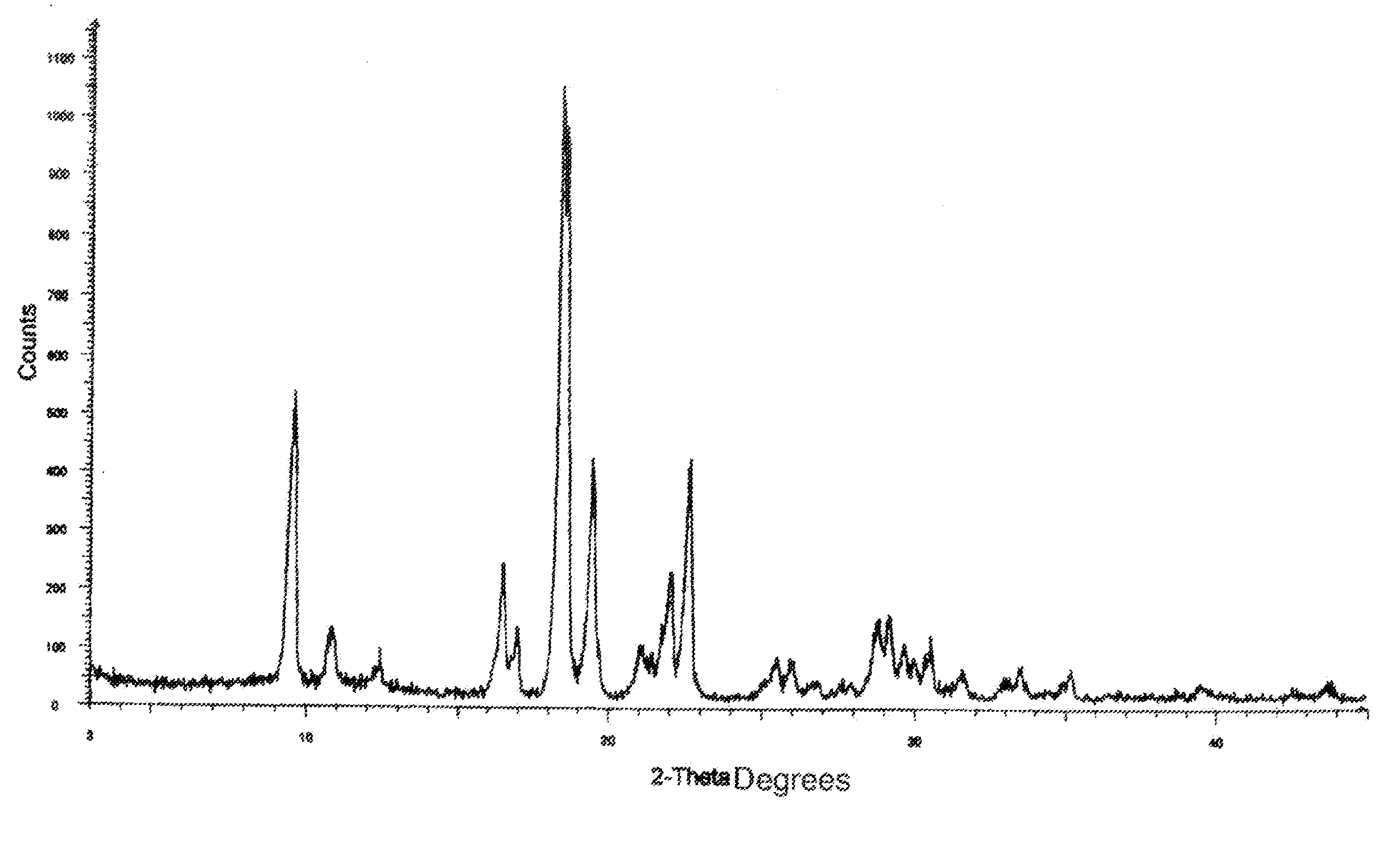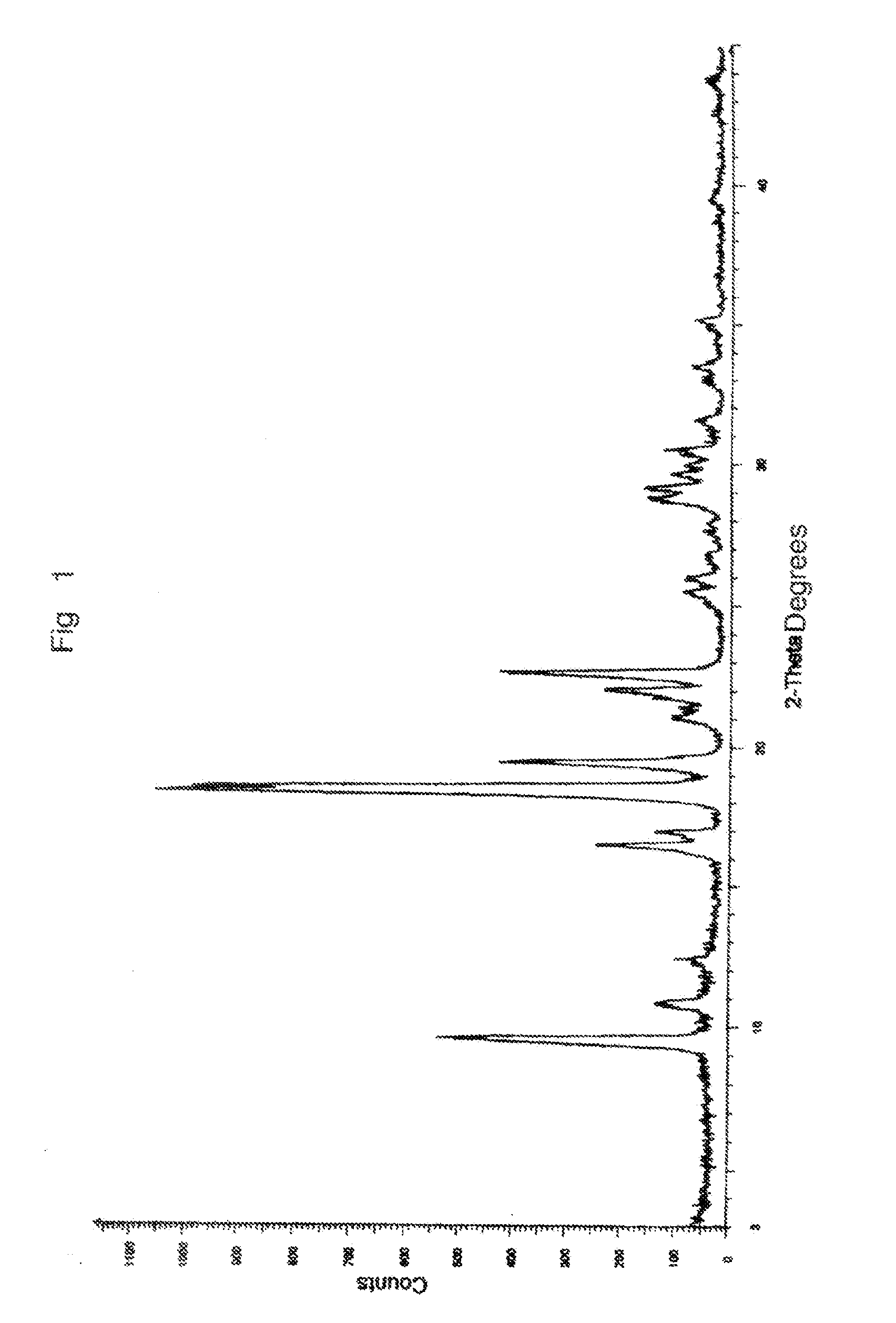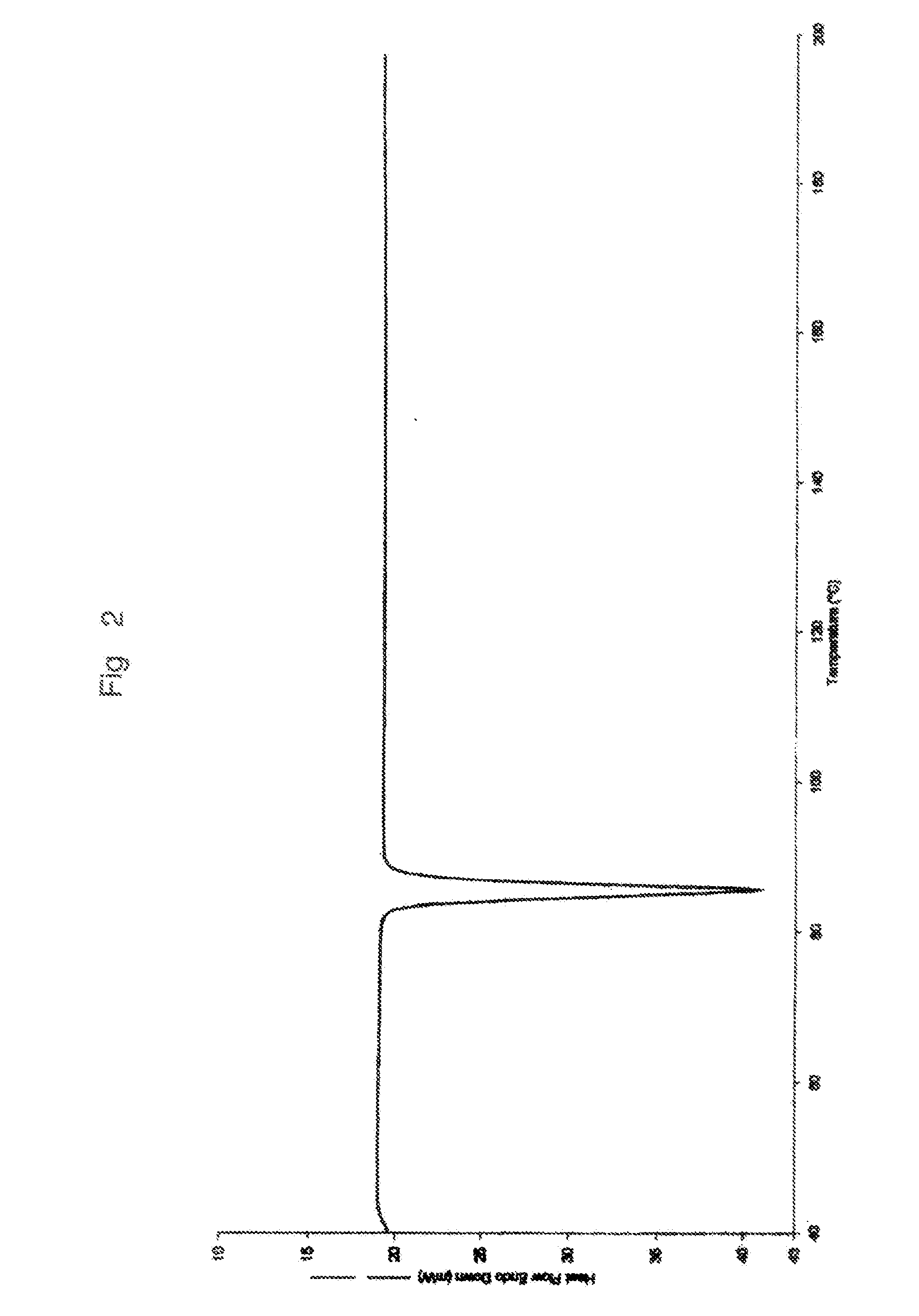Process for preparing anastrozole
- Summary
- Abstract
- Description
- Claims
- Application Information
AI Technical Summary
Benefits of technology
Problems solved by technology
Method used
Image
Examples
example 1
Preparation of 2-[3-bromomethyl-5-cyano-dimethyl-methyl)-phenyl]-2-methyl-propionitrile (Formula II)
[0094] 1.5 Kg of 2-2′-(5-methyl-1,3-phenylene) di-(2-methylpropiononitrile) and 30 L of dichloromethane were charged into a glass flask followed by stirring for 10 minutes. 1.2 Kg of N-bromosuccinimide was charged followed by charging of 0.022 Kg of azobis(isobutyronitrile) and the reaction solution was stirred for 10 minutes. The resultant reaction mixture was heated to about 40.5° C. for 6 hours followed by cooling to 3° C. The reaction mixture was stirred for about for 30 minutes at 3° C. followed by filtering. The resultant filtrate was taken into a clean and dry glass flask followed by charging of 0.35 Kg of N-bromosuccinimide, 0.022 Kg of azobis(isobutyronitrile) and 2 L of dichloromethane. The resultant reaction mass was stirred for 10 minutes and heated to about 40.5° C. for 24 hours. The reaction mass was cooled to about 3.7° C. for 30 minutes followed by filtering. The resu...
example 2
Preparation of 1,3-benezenediacetonitrile, α,α,α′,α′-tetramethyl-5-(1H-1,2,4-triazol-1-ylmethyl) (Formula I)
[0095] 2 Kg of 2-[3-bromomethyl-5-cyano-dimethyl-methyl)-phenyl]-2-methyl-propionitrile and 10 L of N,N-dimethylacetamide were charged in a clean dry reactor followed by stirring for 10 minutes. 0.861 Kg of sodium triazole was charged under nitrogen pressure and the temperature raised to 57.5° C. The obtained solution was maintained for 36 hours at 57.5° C. and then cooled to about 25° C. followed by quenching the reaction by charging the solution to 30 L of water. The resultant reaction solution was extracted with 3×20 L of ethyl acetate followed by separation of organic and aqueous layers. The combined organic layer was distilled at 26.2° C. under a vacuum of −0.6 Kg / cm2 to afford a residue, the and the obtained residue was dissolved in 20 L of toluene followed by treatment with 2×2 L of 2N aqueous hydrochloric acid solution and with 2×8 L of water. The aqueous layer was se...
example 3
Recrystallisation of 1,3-benzenediacetonitrile, α,α,α′,α′-tetramethyl-5-(1H-1,2,4-triazol-1-ylmethyl) (Formula I)
[0097] 600 g of the compound of Formula I was dissolved in 12 L of isopropyl alcohol and the temperature raised to 47.5° C. followed by stirring for 5 minutes at 47.5° C. The obtained solution was filtered through a 0.2 μm filter into a glass flask reactor followed by passing 2 L of isopropyl alcohol through the filter into the flask, and concentration at 50° C. under a 645 mm Hg vacuum until no more solvent was distilled. The obtained residue was maintained under vacuum for 30 minutes. 1.2 L of isopropyl alcohol was charged to the residue followed by raising the temperature to 47.5° C. and stirring to afford a clear solution. 6 L of water was charged to the solution and the mixture was cooled to 34.9° C. and the obtained suspension was maintained for 3 hours at 34.9° C. The obtained suspension was filtered through a Nustche filter by applying vacuum and the solid was wa...
PUM
 Login to View More
Login to View More Abstract
Description
Claims
Application Information
 Login to View More
Login to View More - R&D
- Intellectual Property
- Life Sciences
- Materials
- Tech Scout
- Unparalleled Data Quality
- Higher Quality Content
- 60% Fewer Hallucinations
Browse by: Latest US Patents, China's latest patents, Technical Efficacy Thesaurus, Application Domain, Technology Topic, Popular Technical Reports.
© 2025 PatSnap. All rights reserved.Legal|Privacy policy|Modern Slavery Act Transparency Statement|Sitemap|About US| Contact US: help@patsnap.com



